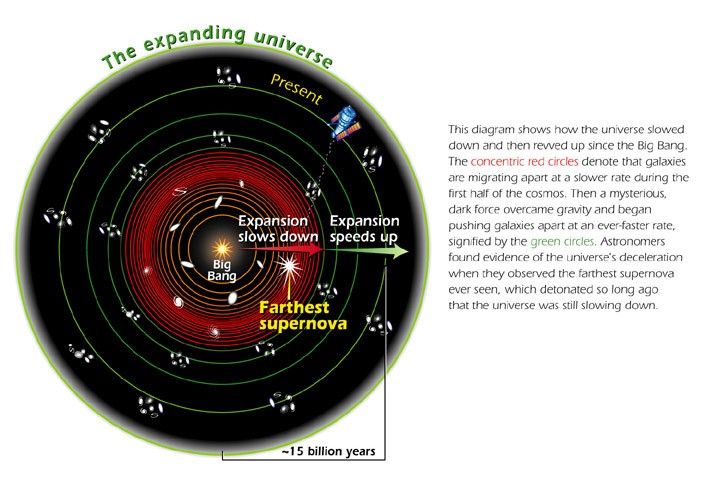1 min read
Home Galaxy of Supernova 1997ff

About the Object
- R.A. PositionR.A. PositionRight ascension – analogous to longitude – is one component of an object's position.12h 36m 48.26s
- Dec. PositionDec. PositionDeclination – analogous to latitude – is one component of an object's position.62° 13' 1.99"
- ConstellationConstellationOne of 88 recognized regions of the celestial sphere in which the object appears.Ursa Major
- DistanceDistanceThe physical distance from Earth to the astronomical object. Distances within our solar system are usually measured in Astronomical Units (AU). Distances between stars are usually measured in light-years. Interstellar distances can also be measured in parsecs.3 billion parsecs (10 billion light-years). Redshift: z~1.7
About the Data
- Data DescriptionData DescriptionProposal: A description of the observations, their scientific justification, and the links to the data available in the science archive.
Science Team: The astronomers who planned the observations and analyzed the data. "PI" refers to the Principal Investigator.Principal Astronomers: A.G. Riess (STScI), R. Thompson (U Arizona), R. Gilliland (STScI), P. Nugent (LBNL), B. Schmidt (MSSSO), J.Tonry (U Hawaii), M. Dickinson (STScI), T. Budavari (JHU), M. Livio (STScI), H. Spinrad (UC Berkeley), D. Stern (UC Berkeley), D. Sanders (U Hawaii), and S. Veilleux (U Maryland) . - InstrumentInstrumentThe science instrument used to produce the data.HST>NICMOS and HST>WFPC2
- Exposure DatesExposure DatesThe date(s) that the telescope made its observations and the total exposure time.December 23, 1997 - June 22, 1998, Exposure Time: ~ 6 days
- FiltersFiltersThe camera filters that were used in the science observations.F814W (I), F110W (J), F160W (H)
- Object NameObject NameA name or catalog number that astronomers use to identify an astronomical object.SN1997ff, Hubble Deep Field-North, HDF-N
- Object DescriptionObject DescriptionThe type of astronomical object.Supernova Type Ia in Hubble Deep Field North Galaxy 4-403.0
- Release DateApril 2, 2001
- Science ReleaseBlast from the Past: Farthest Supernova Ever Seen Sheds Light on Dark Universe
- Credit
Related Images & Videos
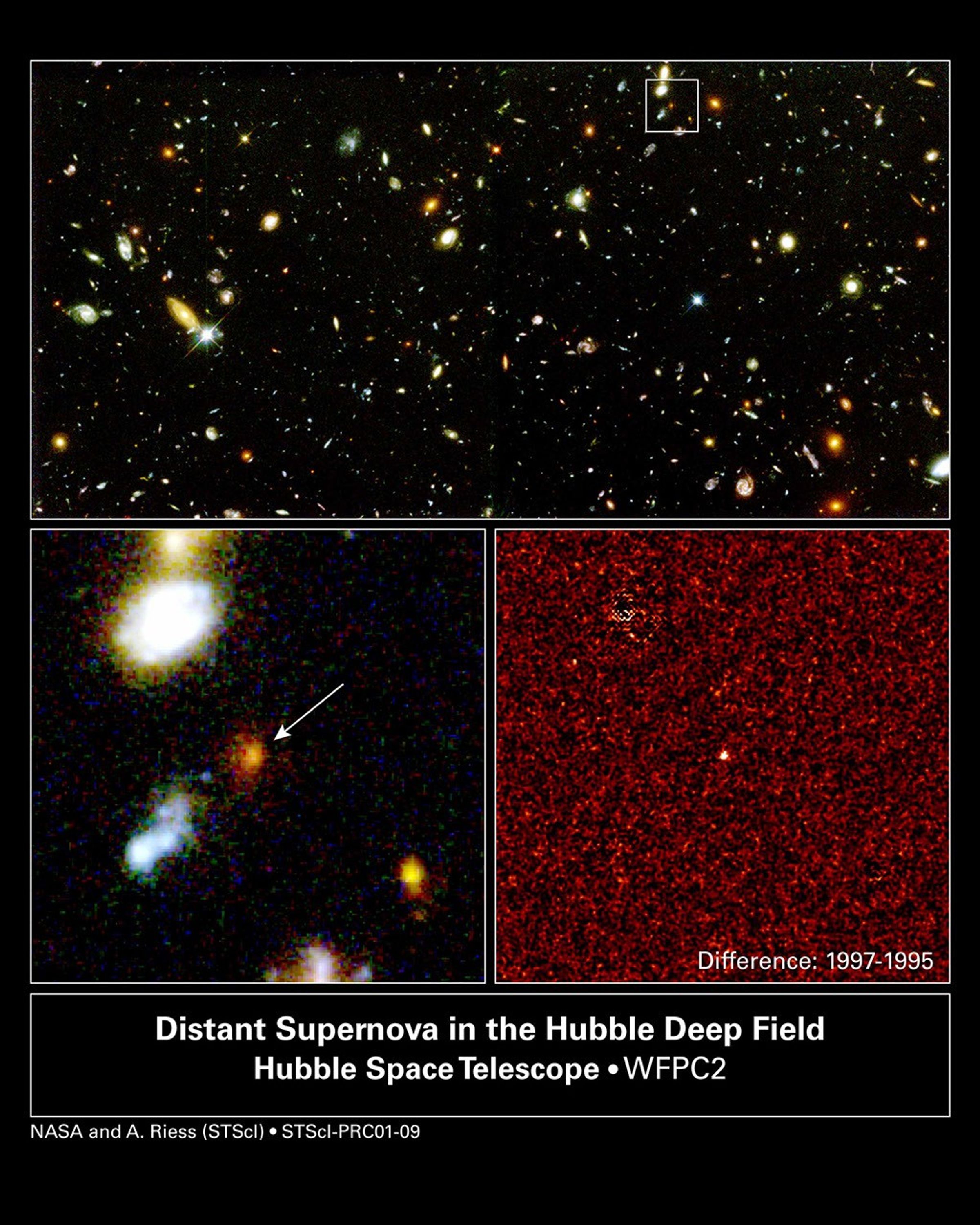
Hubble Spies Most Distant Supernova Ever Seen
Using NASA's Hubble Space Telescope, astronomers pinpointed a blaze of light from the farthest supernova ever seen, a dying star that exploded 10 billion years ago. The detection and analysis of this supernova, called 1997ff, is greatly bolstering the case for the existence of a...
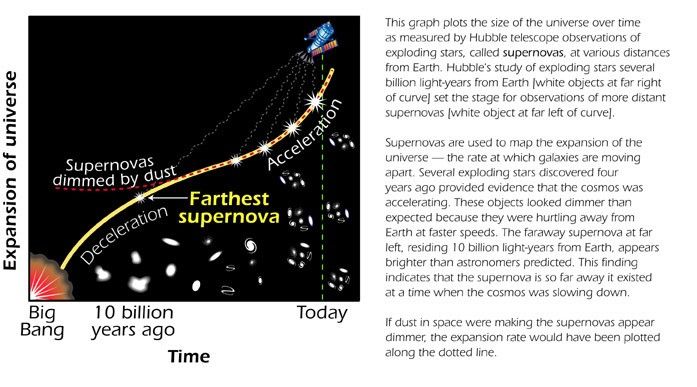
Expansion of the Universe Over Time
This graph plots the size of the universe over time as measured by the Hubble telescope observations of exploding stars, called supernovas, at various distances from Earth. Hubble's study of exploding stars several light-years from Earth [white objects at far right of curve] set...
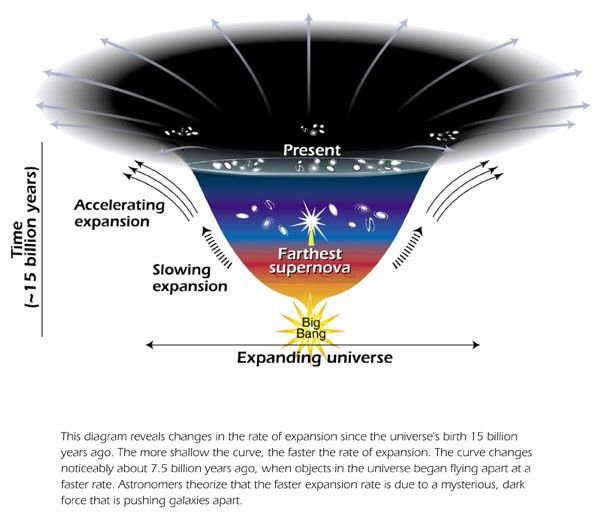
Changes in the Rate of Expansion over Time
This diagram reveals changes in the rate of expansion since the universe's birth 15 billion years ago. The more shalow the curve, the faster the rate of expansion. The curve changes noticeably about 7.5 billion years ago, when objects in the universe began flying apart as a...
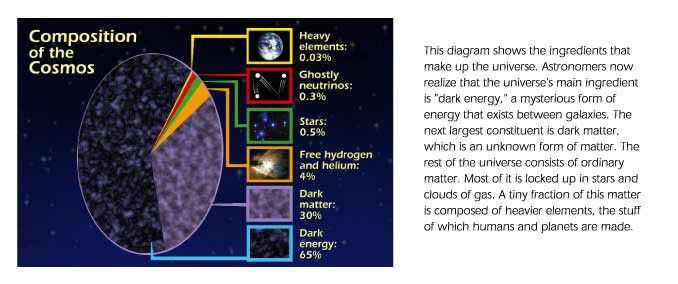
Composition of the Cosmos
This diagram shows the ingredients that make up the universe. Astronomers now realize that the universe's main ingredient is "dark energy," a mysterious form of energy that exists between galaxies. The next largest constituent is dark matter, which is an unknown form of matter....
Share
Details
Claire Andreoli
NASA’s Goddard Space Flight Center
Greenbelt, Maryland
claire.andreoli@nasa.gov



























